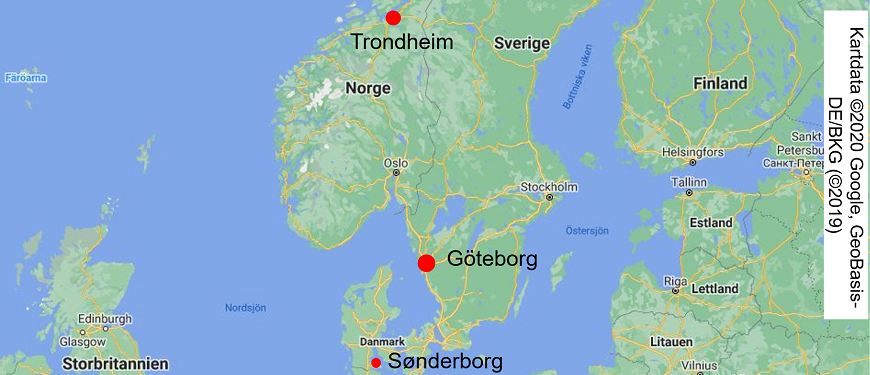Project Presentation
This project aims to promote the Nordic languages and cultures by describing their intonation systems and language-specific prosody; by presenting an outline for suitable teaching materials; and by publishing scientific articles about the prosodic patterns in these languages and about pedagogical approaches to the teaching of these patterns. We aim to facilitate and encourage Scandinavian speakers to hold on to, or even build up, the ability to communicate between them in their native languages. If we can give young people the experience that it is manageable, and potentially even fun, to understand people from other Scandinavian countries, then we can hope that they will make use of this ability also later in life.
The Scandinavian languages Danish, Norwegian and Swedish are so closely related that within Scandinavia they are traditionally referred to “neighboring languages”. Neighboring languages, in opposition to foreign languages, are possible to understand without actually having to learn the language first: “Much of the Nordic Region is bound together by languages so closely related that, with a little effort, most people understand each other.” (homepage of the shared webpage of the The Nordic Council of Ministers and the Nordic Council) This traditional view of the neighboring languages is reflected in several ways in Scandinavian society. For example, in contrast to students from other countries, Scandinavians students can apply for the ordinary university study programs in the other Scandinavian countries without having to document language skills first. From a legal perspective, a university teacher can teach in his/her native Scandinavian language, and the students can answer the exams and hand in their papers in their native Scandinavian languages. But from a practical perspective, it is not that simple, and the situation is changing (see for example Delsing & Lundin Åkesson 2005; Gooskens 2007; Bacquin & Zola Christensen 2013; Bohn & Askjær Jørgensen 2017).
Today, there seems to be little contact (and little interest) in the neighbouring countries and their languages, especially among the younger generations (see Bacquin’s & Zola Christensens (2013) study on Swedish upper secondary school students’ comprehension of Danish in the municipalities most close to the Danish border). Even in the border regions, there is less contact with the neighboring languages today, probably because media consumption habits and services have changed. Also, understanding a neighboring language takes effort, whereas the effort of understanding English has already been taken thoroughly care of in the educational system. In a study on Danish students’ comprehension of Norwegian, Swedish and English, Bohn & Askjær Jørgensen (2017) point out that considerable time and effort is invested in teaching English language and culture in Scandinavian schools, whereas very little time is devoted to the neighbouring languages and countries. For example, in her bachelor thesis on how the neighboring languages are treated in Danish primary and lower secondary school (folkeskolan, classes 0-9), Nørgaard Petersen finds that they are often left out; only teachers with a personal interest in the neighboring languages/countries feel secure enough to address them. As a result, many Scandinavians, especially the young people, prefer to speak English when communicating with other Scandinavians.
This means that right now the ability to directly understand the Scandinavian neighbours comes at a relatively high cost in comparison to English. We therefore aim to develop teaching material that contribute to interlanguage comprehension, especially among younger people, by introducing them to the Scandinavian languages’ speech melodies. The teaching materials developed will be suited for teaching at universities and in schools, but also for use as self-study material. The materials will be easily accessible (freely downloadable from the internet), easy to grasp and easy to use for teachers and learners alike.
Project partners from SDU Sonderborg, NTNU Trondheim and University of Gothenburg combine their expertise on the different Scandinavian languages, on prosodic factors that may impact comprehension, on the prosodic characteristics of their languages and their general theoretical expertise, in order to develop a joint approach to the development of teaching materials for enhancing comprehension across the Scandinavian languages.
